Surgical positioning is critical for ensuring patient safety and effective surgical outcomes. Proper positioning maintains anatomical alignment, prevents complications, and enhances patient comfort and dignity during procedures.
1.1 Importance of Proper Patient Positioning in Surgery
Proper patient positioning is vital for ensuring safety, comfort, and optimal surgical outcomes. It minimizes the risk of complications, such as nerve damage or pressure sores, and maintains anatomical alignment. Correct positioning enhances surgical site exposure, providing better access for the surgical team. Additionally, it supports patient dignity and prevents long-term discomfort. Improper positioning can lead to serious postoperative issues, making it a critical aspect of preoperative planning and teamwork. Effective positioning balances patient comfort with surgical requirements, ensuring a successful procedure.
1.2 Overview of Common Surgical Positions
Surgical positions are standardized to optimize access to the surgical site while ensuring patient safety. Common positions include supine, prone, lithotomy, lateral, and Trendelenburg. Each position serves specific surgical needs, such as improving visibility or reducing complications. Proper positioning requires careful planning and specialized equipment to maintain patient comfort and prevent injuries. These positions are tailored to the procedure, patient anatomy, and surgeon preference, balancing efficiency with safety to achieve the best possible outcomes. Effective use of these positions is essential for successful surgical interventions.
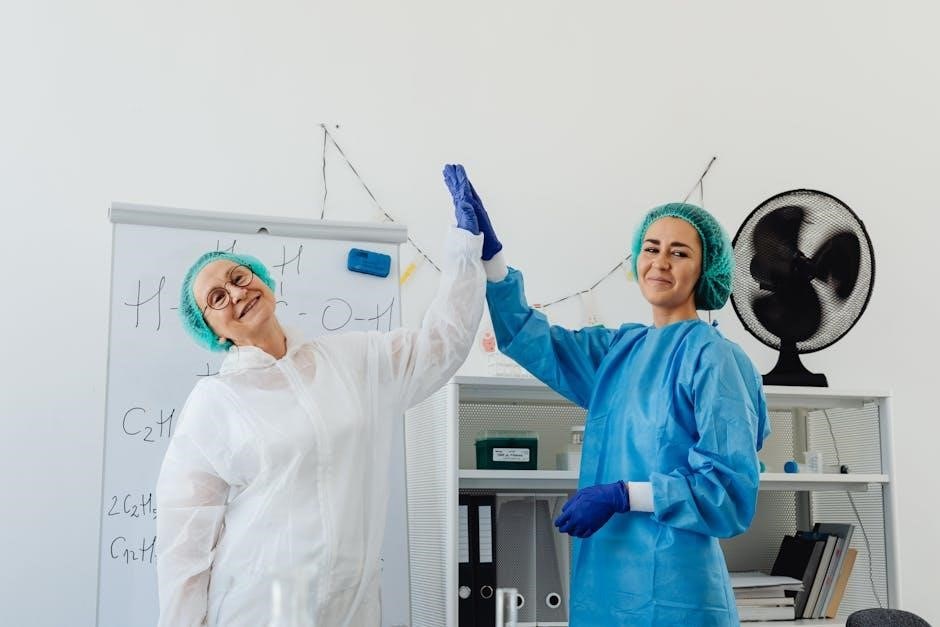
Common Surgical Positions
Common surgical positions are standardized to ensure optimal surgical access and patient safety during procedures, each designed to meet specific surgical needs and minimize complications effectively.
2.1 Supine Position
The supine position places the patient on their back, facing upwards, with arms at their sides or on armboards. It is the most common surgical position, offering easy access to the abdominal and thoracic cavities. This position is ideal for procedures requiring anterior surgical sites and facilitates anesthesiologist access for airway management. Proper padding and support are essential to prevent nerve compression and ensure patient comfort. The supine position is versatile and widely used, making it a cornerstone in surgical practices for its simplicity and effectiveness in various procedures.
2.2 Prone Position
The prone position involves placing the patient on their stomach, with their head turned to one side and arms extended or tucked. It is commonly used for spinal surgeries, procedures involving the posterior body, and certain respiratory support cases. Chest rolls or gel pads are often used to support the patient’s chest and abdomen, ensuring proper breathing and spinal alignment. This position provides excellent access to the posterior surgical sites but requires careful positioning to prevent pressure sores and nerve damage. It is crucial for maintaining patient comfort and safety during prolonged procedures.
2.3 Lithotomy Position
The lithotomy position places the patient on their back with legs elevated and supported by stirrups or boots. This position is commonly used in gynecological, urological, and colorectal surgeries. It provides excellent access to the pelvic and perineal regions. The patient’s legs are typically raised at a 90-degree angle, and support devices ensure comfort and stability. Proper padding and positioning are essential to prevent pressure sores and nerve injury. This position facilitates surgical exposure while maintaining patient safety and dignity during the procedure.
2.4 Lateral Position
The lateral position places the patient on their side, aligning the spine neutrally. It is commonly used for thoracic, spinal, and certain orthopedic procedures. A supportive device, such as a beanbag or lateral positioning straps, is used to stabilize the patient. The upper arm is typically extended or slightly flexed, while the lower arm rests across the body. This position minimizes pressure on the diaphragm, improving respiratory mechanics. Proper padding and alignment are critical to prevent nerve compression and ensure patient comfort during the surgical procedure.
2.5 Trendelenburg Position
The Trendelenburg position places the patient supine with their legs elevated 15-30 degrees above the head. It enhances visibility and access to pelvic and abdominal organs, often used in gynecological and lower abdominal surgeries. Proper padding and support are essential to prevent nerve injury and promote circulation. The position can improve surgical exposure but may cause respiratory or discomfort issues for the patient. Regular monitoring ensures safety and comfort during prolonged procedures in this setup.

Equipment and Accessories for Surgical Positioning
Essential equipment includes operating tables, positioning devices, safety straps, and protective pads. These tools ensure proper alignment, prevent injuries, and maintain patient stability during procedures.
3.1 Operating Table Attachments
Operating table attachments are crucial for optimizing patient positioning. These include adjustable armboards, leg holders, and specialized pads like the Humbles LapWrap Positioning Pad. They ensure precise alignment and stability, enabling better surgical access while minimizing risks of nerve damage or discomfort. Customizable attachments cater to various procedures, enhancing both patient safety and surgical efficiency. Their versatility allows surgeons to maintain optimal positioning for procedures ranging from abdominal surgeries to neurosurgical interventions.
3.2 Patient Positioning Devices
Patient positioning devices are essential for maintaining optimal alignment and stability. These include gel pads, safety straps, and specialized supports like headrests and body bolsters. They help prevent pressure sores and nerve damage while ensuring proper exposure of the surgical site. Devices like the Mayfield skull clamp are used in neurosurgery, while others, such as leg holders, are crucial for lithotomy positions. These tools enhance patient safety, reduce complications, and improve surgical accessibility, ensuring precise positioning throughout procedures.
3.3 Safety Straps and Pads
Safety straps and pads are vital for securing patients during surgery, preventing movement and injuries. Gel pads and foam cushions protect pressure-sensitive areas, while axillary rolls and knee pads reduce strain. Safety straps ensure patient stability, especially in inclined positions, without compromising circulation. These devices are designed to minimize pressure sores and nerve damage, ensuring patient comfort and safety throughout procedures. Proper use of these accessories is crucial for maintaining optimal positioning and preventing complications during surgical interventions.

Patient Safety and Comfort
Patient safety and comfort are paramount, involving proper positioning to prevent complications, while ensuring dignity and effective surgical access with appropriate supportive devices.
4.1 Maintaining Patient Dignity and Privacy
Maintaining patient dignity and privacy is essential during surgical positioning. This involves using appropriate draping techniques to cover exposed areas and ensuring minimal exposure of the patient’s body. Surgical teams must respect the patient’s personal space and avoid unnecessary interactions that could compromise privacy. Positioning devices should be used to securely and comfortably hold the patient, while also preserving their modesty. Clear communication and respectful handling by the surgical team further contribute to upholding the patient’s dignity throughout the procedure.
4.2 Preventing Pressure Sores and Nerve Damage
Preventing pressure sores and nerve damage is critical during surgical positioning. Proper padding, particularly in high-risk areas like the elbows and knees, is essential to reduce pressure points. Positioning devices, such as straps and supports, help maintain correct alignment and prevent nerve compression. Regular assessments by the surgical team ensure that adjustments are made to avoid prolonged pressure on sensitive areas. This proactive approach minimizes the risk of postoperative complications and promotes faster patient recovery.
4.3 Ensuring Proper Exposure of Surgical Site
Proper exposure of the surgical site is vital for successful procedures. This involves positioning the patient to allow unobstructed access to the target area. Techniques such as adjusting the operating table, using specialized positioning devices, and strategic draping ensure optimal visibility. Proper lighting and alignment of equipment further enhance exposure. The surgical team collaborates to balance patient safety with surgical access, minimizing complications and improving outcomes.
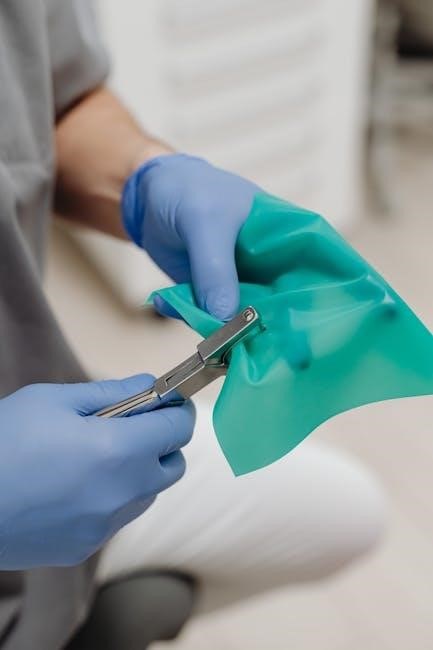
Specialized Surgical Positions
Specialized surgical positions, such as Kraske and Jackknife, are advanced techniques enhancing access and precision in complex procedures, ensuring optimal surgical outcomes and patient safety.
5.1 Kraske Position
The Kraske position is a specialized surgical position commonly used in spinal or spinal cord surgeries. It involves placing the patient prone on a flexed operating table, with the body bent at the hips to allow optimal access to the spine. This position enhances visibility and surgical precision, particularly for procedures involving the lumbar and sacral regions. It is often employed for laminectomies or spinal tumor removals. Proper padding and anesthesia considerations are crucial to ensure patient safety and comfort during the procedure, while maintaining clear access to the surgical site.
5.2 Jackknife Position
The Jackknife position is a specialized surgical position where the patient is placed prone with extreme flexion at the hips and knees. This position is commonly used for spinal or rectal surgeries, providing excellent access to the lower back, pelvis, and sacral regions. The patient’s body is bent sharply, resembling a jackknife, with the head lower than the pelvis. Proper padding and support are essential to prevent pressure sores and nerve damage. This position enhances surgical visibility and access, making it ideal for complex procedures requiring precise anatomical alignment and exposure.
5.3 Reverse Trendelenburg Position
The Reverse Trendelenburg Position places the patient supine on an inclined surface, with their head elevated higher than their feet. This position is commonly used in abdominal, gynecological, and laparoscopic surgeries to enhance visibility of the upper abdominal cavity. It aids in reducing bleeding in the surgical field and improves access to organs like the liver and spleen. Proper support for the patient’s legs and spine is crucial to prevent discomfort and nerve injury. This position also helps in maintaining better respiratory function during surgery, ensuring patient safety and procedural efficiency.
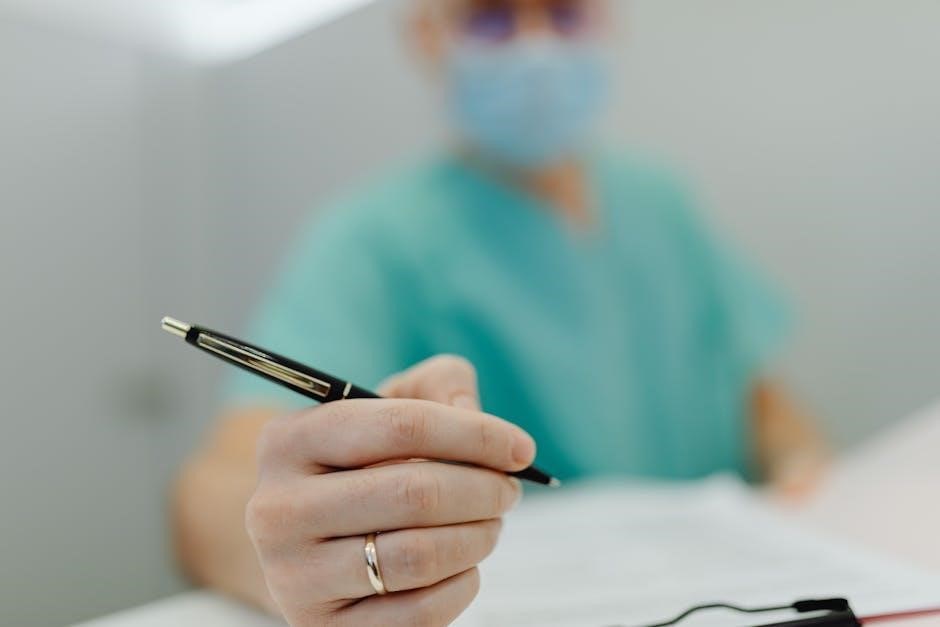
Anatomical Considerations
Proper patient positioning protects vital organs and prevents nerve damage. Anatomical alignment ensures safety and comfort, minimizing risks during surgical procedures and recovery.
6.1 Body Structures at Risk in Each Position
Different surgical positions pose risks to specific body structures. The supine position can compromise respiratory function, while prone positioning may lead to nerve injury. Lithotomy increases pressure on the lower spine, potentially causing numbness or pain. Lateral positioning risks brachial plexus strain, and Trendelenburg can result in facial edema. Understanding these risks is crucial for minimizing complications and ensuring patient safety during procedures.
6.2 Protecting Vital Organs During Surgery
Protecting vital organs during surgery requires careful positioning to avoid compression or damage. Padding and supports are used to prevent pressure on sensitive areas, ensuring proper blood flow and organ function. For instance, chest and abdominal organs are safeguarded in prone positions by avoiding excessive pressure. Similarly, in lithotomy, padding protects the perineum and pelvic nerves. Maintaining homeostasis and careful positioning are critical to preserving organ integrity and preventing long-term complications. The surgical team must monitor and adjust positioning to ensure optimal organ protection throughout the procedure;
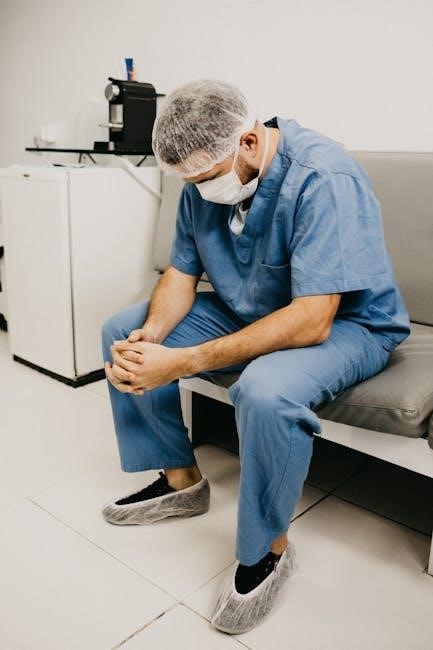
Surgical Positioning for Specific Procedures
Surgical positioning varies by procedure, with neurosurgery using the Mayfield clamp, spinal surgery employing prone positions, and cardiovascular procedures often utilizing the Trendelenburg position for optimal access.
7.1 Neurosurgery Positions
In neurosurgery, patient positioning is tailored to provide optimal access to the cranial or spinal structures. The Mayfield skull clamp is commonly used to stabilize the head, ensuring precise alignment during procedures like aneurysm clipping or tumor resection. Prone or lateral positions may be employed for posterior fossa surgeries. These positions minimize complications and protect vital structures, while maintaining a neutral neck alignment to preserve airway patency. Proper positioning is critical for preventing neurological damage and ensuring successful surgical outcomes.
7.2 Spinal Surgery Positions
Spinal surgery often requires precise positioning to access the spine safely. The prone position is commonly used, with the patient lying face down on a specialized frame, such as the Jackson spinal table, to maintain spinal alignment. This position allows excellent exposure for posterior spinal surgeries, such as laminectomies or spinal fusions. Padding is crucial to prevent pressure sores and nerve damage. The lateral position may also be used for certain thoracic or lumbar procedures. Proper positioning ensures optimal surgical access while protecting the patient from potential injury.
7.3 Cardiovascular Surgery Positions
In cardiovascular surgery, patient positioning is tailored to optimize surgical access while ensuring patient safety. The supine position is most common, allowing easy access to the chest cavity. For procedures like coronary artery bypass grafting, the Trendelenburg position may be used to improve exposure of the heart. The prone position is less common but may be utilized for posterior approaches in certain thoracic surgeries. Proper positioning ensures adequate ventilation, prevents complications, and supports the surgical team’s ability to perform complex procedures effectively.
The Role of the Surgical Team
The surgical team collaborates to ensure patient safety and optimal surgical conditions. The anesthesiologist monitors stability, while technologists position the patient accurately. Clear communication is essential for success.
8.1 Responsibilities of the Anesthesiologist
The anesthesiologist plays a pivotal role in ensuring patient stability during surgical positioning. They monitor vital signs, manage anesthesia, and assess risks associated with specific positions. Their expertise ensures the patient remains comfortable and safe, particularly in complex positions that may compromise respiratory or cardiovascular function. Collaboration with surgeons and technologists is crucial to balance surgical access with patient well-being. Proper anesthesia management prevents complications and supports optimal surgical outcomes, making the anesthesiologist indispensable to the surgical team.
8.2 Role of Surgical Technologists in Positioning
Surgical technologists are essential in assisting with patient positioning, ensuring safety and alignment. They help place patients in the correct position using specialized equipment like stirrups or straps, ensuring stability. Technologists also assist in maintaining patient dignity and privacy, draping the surgical site appropriately. Their role involves verifying that all positioning devices are secure and functioning properly. Effective communication with the surgical team is crucial to ensure the position meets the surgeon’s needs while minimizing risks of injury or discomfort for the patient.
8.3 Communication Between Team Members
Effective communication among surgical team members is crucial for patient safety and successful outcomes. Clear dialogue ensures proper positioning, minimizes risks, and addresses adjustments promptly; The anesthesiologist, surgeon, and technologists must collaborate to verify the patient’s position, secure equipment, and maintain dignity. Open communication helps resolve issues quickly, ensuring proper surgical site exposure and a safe procedure. This teamwork enhances overall efficiency and patient care during surgery.
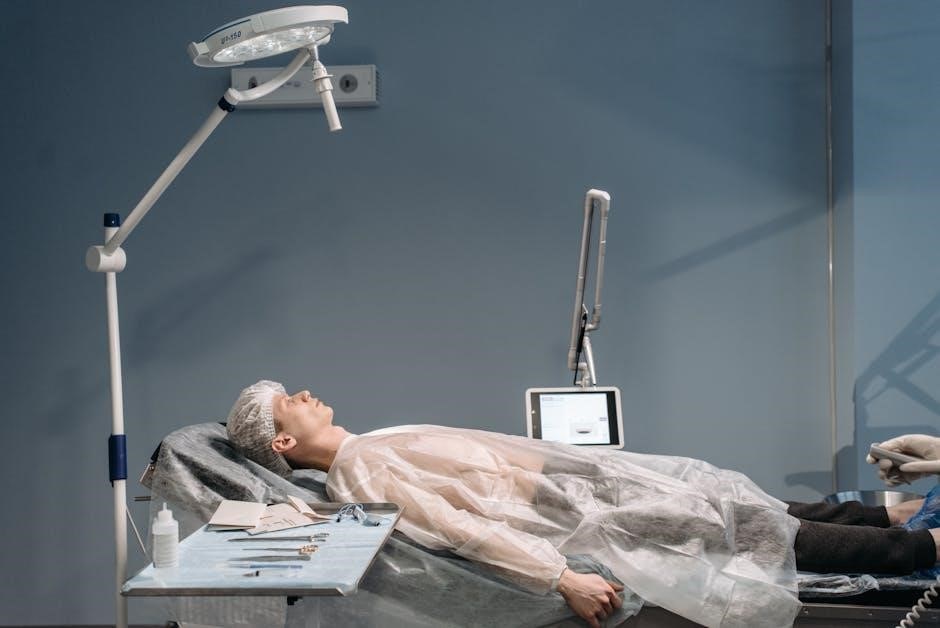
Complications and Risks
Improper surgical positioning can lead to complications such as pressure sores, nerve damage, and respiratory distress. These risks highlight the importance of precise and careful patient placement.
9.1 Complications Arising from Improper Positioning
Improper surgical positioning can result in significant complications, including pressure sores, nerve damage, and respiratory distress. Prolonged pressure on vulnerable areas may lead to skin breakdown or neuropathy. Inadequate support in prone or lithotomy positions can cause rhabdomyolysis or compartment syndrome. Additionally, poor positioning may compromise respiratory function, especially in obese patients or those with pre-existing conditions. These risks underscore the importance of careful planning and monitoring to prevent long-term harm and ensure patient safety during surgical procedures.
9.2 Managing Positioning-Related Injuries
Managing positioning-related injuries requires prompt intervention and careful monitoring. Pressure sores should be addressed with wound care and redistributing pressure. Nerve injuries may necessitate physical therapy or surgical intervention. Proper padding, supportive devices, and regular patient repositioning can prevent complications. Monitoring for signs of distress, such as numbness or respiratory difficulty, is crucial. Using equipment like the Humbles LapWrap Positioning Pad can aid in maintaining safe positioning. Early identification and treatment are key to minimizing long-term damage and ensuring optimal patient recovery and safety post-surgery.

Future Trends in Surgical Positioning
AI and advanced positioning devices are transforming surgical practices, enhancing precision and patient safety. These innovations streamline procedures, reduce complications, and improve overall surgical efficiency.
10.1 Use of AI in Patient Positioning
AI is revolutionizing patient positioning by enabling real-time monitoring and predictive analytics. AI algorithms analyze patient anatomy and optimize positioning to minimize risks and improve surgical outcomes. These systems can predict potential complications, such as nerve damage or respiratory issues, and adjust positioning accordingly. Integration with imaging technologies allows for precise alignment, reducing human error. AI also facilitates personalized positioning plans tailored to individual patient needs, enhancing safety and efficiency in the operating room. This technology is expected to become a standard in modern surgical practices, improving patient care and procedural success.
10.2 Advanced Positioning Devices and Technology
Advanced positioning devices, such as adjustable operating tables and specialized pads, enhance surgical precision and patient safety. Innovations like the Humbles LapWrap Positioning Pad improve access and stability. Patient positioning systems integrated with imaging technologies enable real-time adjustments, reducing complications. These tools minimize human error, optimize surgical exposure, and ensure proper alignment. Modern devices also prioritize patient comfort, reducing pressure points and nerve damage risks. Such technologies are transforming surgical practices, offering tailored solutions for complex procedures and improving overall outcomes. They represent a significant advancement in surgical positioning, making procedures safer and more efficient.
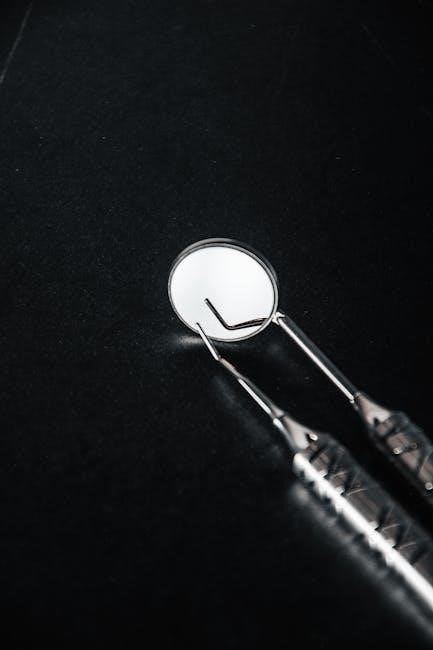
Case Studies and Examples
Case studies highlight successful surgical outcomes due to proper positioning, while others reveal complications from improper techniques, underscoring the importance of precise patient alignment.
11;1 Successful Outcomes Due to Proper Positioning
Proper surgical positioning has led to significant improvements in patient outcomes. For instance, the lithotomy position facilitated precise access during gynecologic surgeries, minimizing complications. Similarly, prone positioning in spinal procedures enhanced visibility, reducing operation times. These examples highlight how optimal alignment ensures safety, comfort, and procedural efficiency, ultimately improving recovery rates and patient satisfaction. Such cases demonstrate the critical role of accurate positioning in achieving successful surgical results and maintaining patient dignity throughout procedures.
11.2 Lessons Learned from Positioning-Related Complications
Positioning-related complications, such as pressure sores and nerve damage, highlight the importance of careful planning. Cases like spinal cord infarction in hyperlordotic positions underscore the risks of improper alignment. These incidents teach the necessity of using safety straps, padding, and regular monitoring. Proper communication among surgical teams and adherence to guidelines can prevent such complications. These lessons emphasize the critical role of precision and vigilance in patient positioning to avoid long-term harm and ensure optimal surgical outcomes. Continuous training and awareness are key to mitigating these risks effectively.
Surgical positioning is vital for patient safety, comfort, and successful outcomes. Proper alignment and equipment ensure optimal access while minimizing risks, highlighting the importance of precise teamwork and planning.
12.1 Summary of Key Points
Surgical positioning is essential for optimizing surgical access, minimizing complications, and ensuring patient safety. Proper positioning balances anatomical alignment, comfort, and procedural requirements. Common positions like supine, prone, and lithotomy each serve specific surgical needs. Equipment such as operating tables, straps, and padding plays a critical role in maintaining stability. The surgical team must communicate effectively to achieve precise positioning, preventing nerve damage and pressure sores. Ultimately, correct positioning enhances surgical outcomes and patient recovery, underscoring its importance in modern surgical practices.
12.2 Final Thoughts on the Importance of Surgical Positioning
Surgical positioning is a foundational aspect of successful surgical procedures, directly influencing patient safety, comfort, and outcomes. Proper positioning not only aids surgeons in achieving optimal access but also protects patients from potential complications. It requires meticulous planning, effective communication, and the use of appropriate equipment. By prioritizing patient-centered positioning, healthcare teams ensure dignity, minimize risks, and enhance recovery. This practice underscores the critical role of surgical positioning in modern medicine, making it indispensable for achieving excellence in surgical care.
References and Further Reading
Key resources include surgical positioning PDF guides by AA Sufianov and AV Ovechkina, detailing techniques and patient safety protocols for optimal surgical outcomes.
13.1 Recommended Resources for Surgical Positioning
For comprehensive insights, explore “Surgical Positioning Techniques” by AA Sufianov and AV Ovechkina’s works on patient safety and post-surgical rehabilitation. The document outlining surgical positions, including supine, prone, and lithotomy, is a valuable resource. Additionally, Welch’s “Patient Positioning for Surgery and Anesthesia” provides detailed guidance. These resources are available as PDF guides on academic databases and medical websites, offering practical knowledge for surgeons and anesthesiologists to ensure optimal patient outcomes.
13.2 Suggested PDF Guides and Manuals
Download the “Standards of Practice for Surgical Positioning” PDF by AST for best practices. Welch’s “Patient Positioning for Surgery” offers detailed guides. The “Surgical Positioning Techniques” manual by AA Sufianov provides practical insights. Access “Lithotomy, Trendelenburg, and Prone Positioning” guides for specific procedures. PDFs on neurosurgery and spinal procedures are also available. These resources include checklists, anatomical considerations, and safety protocols, ensuring optimal patient positioning and minimizing risks during surgery.
